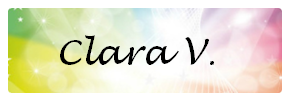It is my last post, it is about the educative aspects of
literature; we can use it to work on culture and values. But, first we have to
know about literature, children´s literature and its main characteristics which
are very important to keep children feel motivated, help them to understand the
tales and achieve a meaningful learning.
The literature
is the art (works made up by the
humans with an aesthetic or communicative aim; it is used to express ideas and
feelings) that use the word as an instrument in its oral and written form.
There are three types: poetry, drama and fiction and nonfiction narrative.
Children´s literature is the literature focused
in children. Therefore, there are few
characters and they used to be
animals or children in order to motivate them because they feel indentified, it
has a lineal storyline, many images and pictures and it has always the same structure. All these things
help the children to follow the story.
During ages, literature has been use to
manifest a situation. In some cases, as happened with nursery rhythms, stories have
been focused into adult population but these stories have been developed and
adapted to infant population. Because of that we can learn about culture
such as values, appearance (dress up), costumes, places and sometimes real
events that happen in a determinate context. But we can also use literature to work in values such as respect, share,
cooperation, friendship, freedom or help the others through the morals that tales
have.
After reading a book you should make them
reflect about it because we can read to enjoy but also to learn. You can guide
it asking them about the context; the main characters, the secondary characters
and their physical aspects; the event that is been developed, the objects that
appear and the moral.
An example:
We can use the tale “The three little pigs” in
order to work on the effort.
First: the read the tale
Second: we can make the following questions:
· Who are the characters? The three pigs and a wolf
· What are the elements that appear in
the story? There
are three houses. The first one is made up of straw, the second one is made up
of wood and the third one is made up of brick.
·
What happens in the story? In the story the pig that built the
straw house finish very quickly and it have a lot of time to play, the one that
built the wood house has a lot of time too, and the one that built the brick
house spent a lot of time building it. But the wolf arrived; the three little
pigs were not eaten by the wolf thanks to the last pig and its effort.
·
What is the moral of this tale?
The moral of this tale is that we have to make an effort in order to
achieve our goals.
My proposal is to start the lessons with your students
with a little tale and a reflection as warming-up to work feelings and values
but you can also use them to introduce a topic or to work on a specific
context. As we have seen in class, stories have been changing because of the
mentality of the people, the place and context of each time. So, we must take
this into account when we read a story to children.



No hay comentarios:
Publicar un comentario